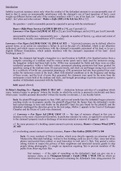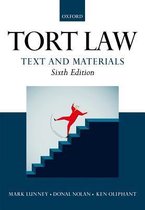College aantekeningen
Nuisance
- Vak
- Instelling
- Boek
This set of notes covers the topic of nuisance in tort law. It contains lecture notes, case summaries, extracts from the leading textbook, as well as helpful pointers for exam questions. Please note that this document includes extracts and/ or information from multiple textbooks (Lunney & Oliphant,...
[Meer zien]






